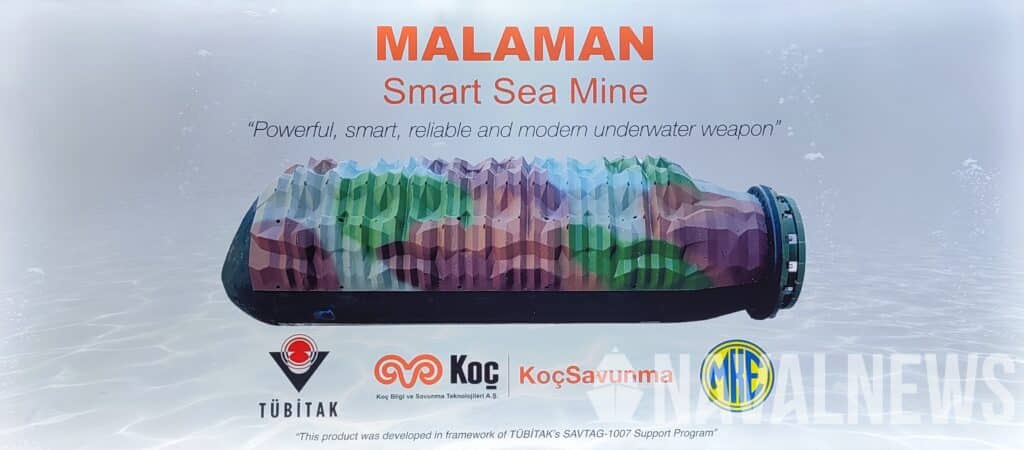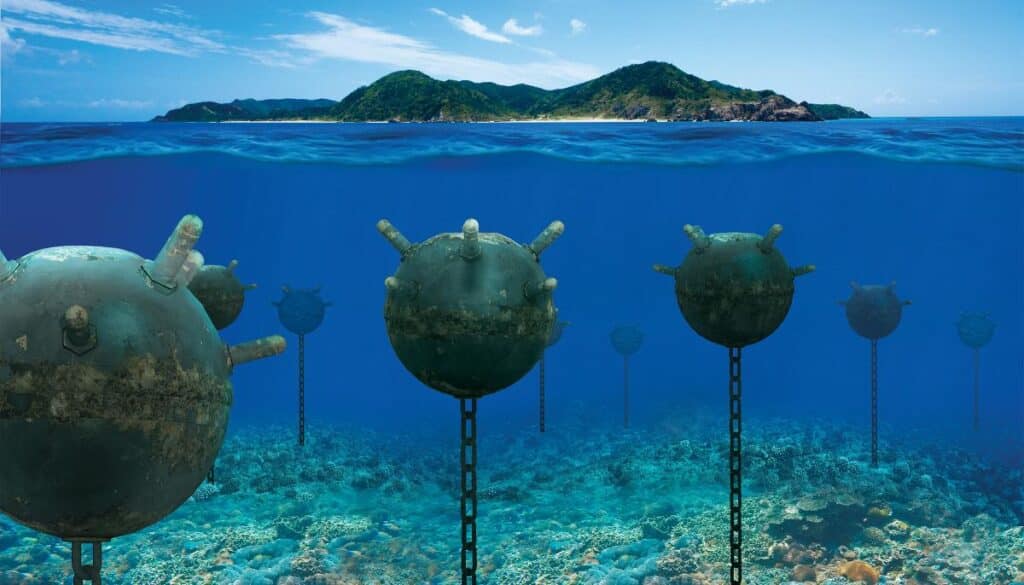DSA 2024: Camouflaged Smart Sea Mine from Türkiye - Naval News
The Malaman smart naval mine project aims to eliminate the Turkish Navy’s reliance on foreign sources for mine warfare. KoçSavunma, serving as the primary coordinator, develops the mine’s smart part and overall design. TÜBİTAK, providing project support, manages the explosive control aspect, while MKE, another supporting company, manufactures the explosive material for the mine.
Debuting at the IDEF 2023 exhibition, the mine, showcased at the DSA 2024 exhibition, has progressed to its final stages according to information disclosed to Naval News by company representatives at the KoçSavunma booth. It has successfully completed the functional demonstration phase, including an actual detonation at sea. Currently undergoing final acceptance procedures, Malaman is poised to achieve initial operational capability in the following months.
“The Malaman Smart Naval Mine successfully completed its functional demonstration in February 2024, including a live detonation at sea. As it enters its final acceptance phase, we anticipate mass production to commence later this year.” the KoçSavunma official said.
Malaman is a modern, adaptable and scalable smart bottom mine which can detect and classify its targets from long distances and high waters with its acoustic, magnetic, and pressure sensors. The Malaman sea mine can be laid by submarines, warships, and aircraft. According to company officials, the only limitation for unmanned surface vessels to lay this sea mine is Malaman’s size and weight.
 Poster of the Malaman smart sea mine showcased at DSA 2024
Poster of the Malaman smart sea mine showcased at DSA 2024
Equipped with the KoçSavunma Electronic Module and Smart Mine Firing Mechanism, this mine detects and categorizes ships within target categories, then strategically detonates its warhead at the optimal point, effectively breaking the keel and sinking the target vessel. Utilizing the counters on Malaman, it can be pre-programmed to detonate beneath a specific ship among those sailing in a convoy, offering precise targeting capabilities.
Malaman has visual (in the form of a camouflaged cover) and acoustic stealth in harmony with the seabed environment. It carries castable plastic-bonded underwater explosives. Malaman is immune to fast heating and bullet impact.
The mine features an Underwater Acoustic Identification Friend or Foe (IFF) system and will be outfitted with pressure, vibration, magnetic anomaly, and sound sensors. With a heavy warhead, the mine will utilize the bulk charging method (expansion/swelling damage) to neutralize its target element.
Technical characteristics:
Mine Type: War and exercise bottom mine Sensor types: Acoustic, magnetic, pressure Operating depth: More than 100m Weight: More than 600kg Diameter: 533mm Length: More than 1800mm Explosive type: Plastic-bonded underwater explosive Operating Temprature: Between -2.5°C and +36°C Author’s commentThe recent deployment of sea mines during the Russian-Ukrainian war has underscored the enduring efficacy of this seemingly antiquated technology, reminding us of its significant impact on restricting maritime freedom. While the removal of these mines from the sea is a separate concern, their deployment serves as a stark reminder of their ability to assert control over strategic areas.
As a strategic asset, mines are designed to deny enemy access to specific regions. In this context, they contribute to the establishment of an Anti-Access/Area Denial (A2/AD) environment, effectively controlling territory without the need for a continuous active presence. Mines can serve both offensive and defensive purposes, and given the profound impact of older technology mines witnessed in the Ukraine war, it’s evident that Malaman will be exceptionally effective in this regard.
 Mines remain important in naval warfare as a silent and insidious weapon (USNI image)
Mines remain important in naval warfare as a silent and insidious weapon (USNI image)
The smart capabilities of Malaman, including advanced software and sensors, enable it to discern and selectively engage high-value targets while minimizing the risk of detonation under unintended or lower-value vessels. This not only deceives adversaries into underestimating the mined area but also complicates the efforts of Mine Countermeasure (MCM) ships, prolonging the time required for clearance operations—an essential consideration in MCM operations.
Moreover, the long-range fired version of Malaman, known as UÇA, represents a significant advancement in offensive mine capabilities, enhancing the overall strategic advantage. Offensive mining is the riskiest type of mining because it is conducted in the enemy A2/AD zone, outside harbors, and across important shipping routes to sink both merchant and military vessels. For this reason, submarines and aircraft are usually used for offensive mining, with aircraft taking a significant risk during the operation.
This is because the aircraft must move to the mine site and drop the mine with great attention within the standoff range of enemy air defenses. Mining from 70 kilometers away is a significant development, and the use of drones reduces the risk to zero.
Therefore, the UÇA can be considered a game-changing technology on the naval scene, because it will limit enemy warships’ and submarines’ movements in contested waters without risk.















































